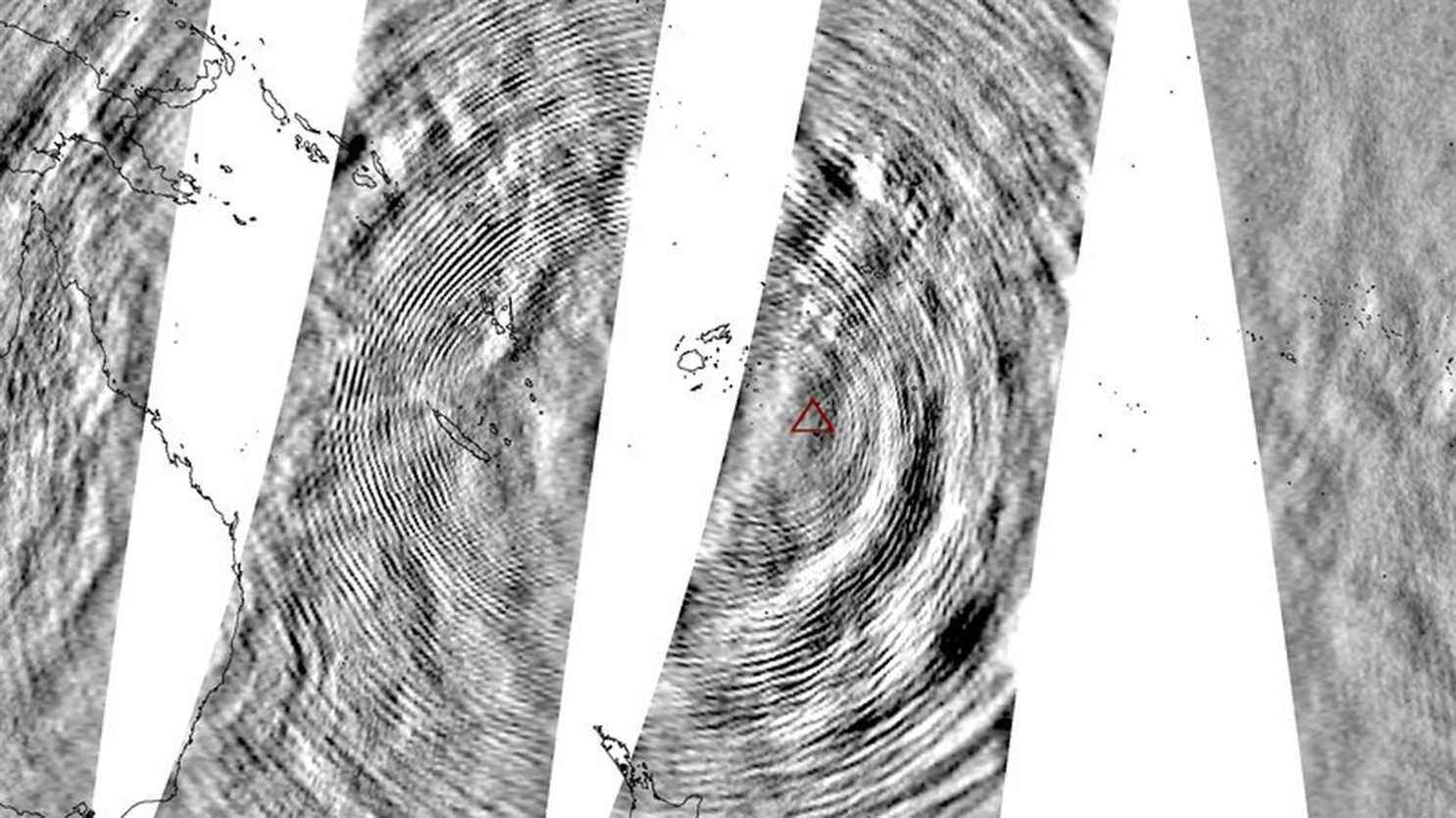We are talking again about the terrible eruption that shook the Tonga Islands a week ago with Mathilde Fontez, editor-in-chief of the scientific magazine Epsiloon. And scientists are studying a strange phenomenon.
franceinfo: While help is finally arriving on site, are the scientists studying the images, the data?
Mathilde Fontez: Yes, and to be honest, they are quite perplexed. First by the intensity of the explosion. We said it, it is record. And it remains to understand why. On this, there is a track: it is the depth of the volcano.
At the time of the eruption, the top of the crater was submerged below the sea surface, 150 – 200 meters. This is perhaps what amplified the phenomenon: when the magma and the gases rose, they suddenly encountered much colder water. And it created an explosive mix.
If the depth had been greater, the water would have rather tended to smother the explosion. But it is not only power that questions. The researchers are intrigued by the strange propagation of the shock wave in the atmosphere.

Thanks to the images that were taken by satellite?
Yes, in particular by those taken in the infrared, by NASA’s Aqua satellite. On the images, we see waves, waves in concentric circles in the clouds, which we had never seen before. In any case since the satellite has been in service, since 2002.
So in itself, the phenomenon is known: when the molecules of the air are disturbed vertically, we know that it can form these gravity waves which propagate. It can just happen when the wind picks up on top of a mountain. But there, the circles that have been captured by the satellite are very numerous.
There are dozens of them. They extend for 16,000 kilometers around the eruption. The phenomenon extends downwards to the surface of the sea. And upwards no doubt to the ionosphere, at an altitude of 80 kilometers. And everything is much more confused, there seems to be a mixture of sizes and types of waves. The convection of the atmosphere seems quite complicated, bumpy…

Are there any hypotheses to explain this?
The study is just beginning. But one of the ideas is that this atypical wave pattern would be due both to the great power of the eruption, and to its duration. It all happened in 8 minutes in the Tonga Islands! It’s very short. Often, the eruptions can be counted in days, in months. Some even last several years…
Even more than its intensity, it is the brutality of this eruption that is exceptional. The specialists evoke a large bubble of hot air which would have risen in the atmosphere, and which would have somehow reversed the air.
To read
Article on the site of Nature
